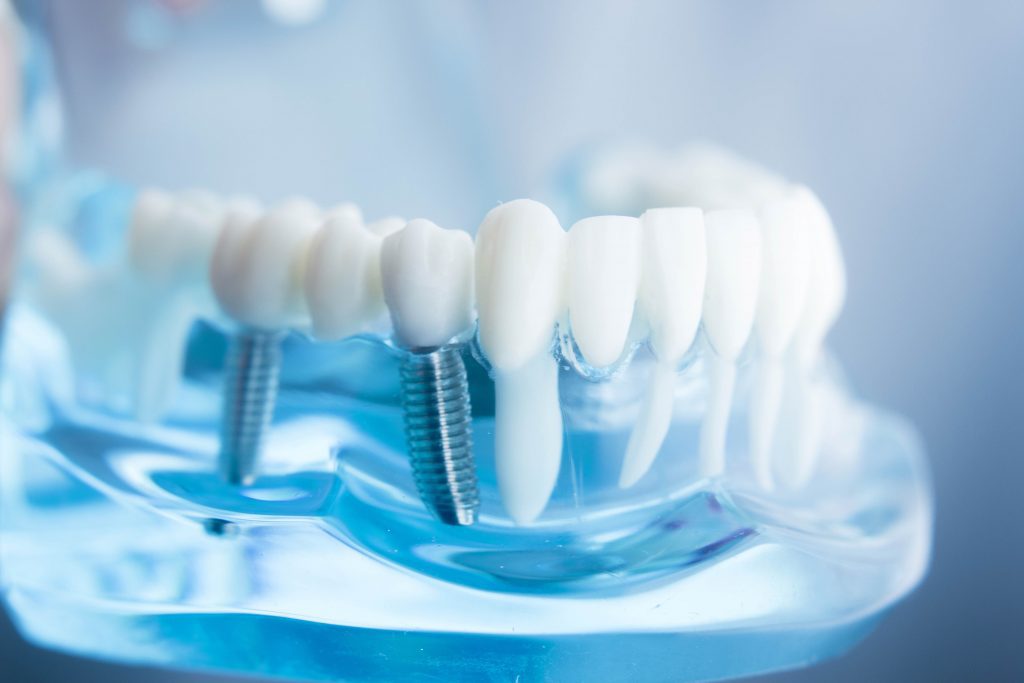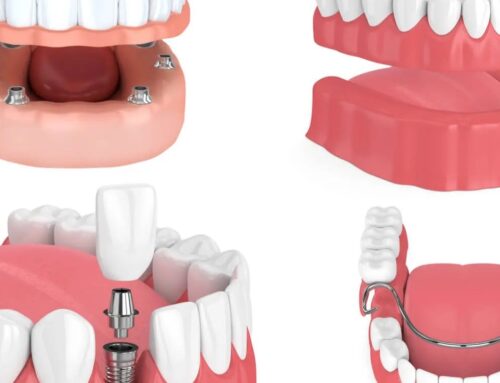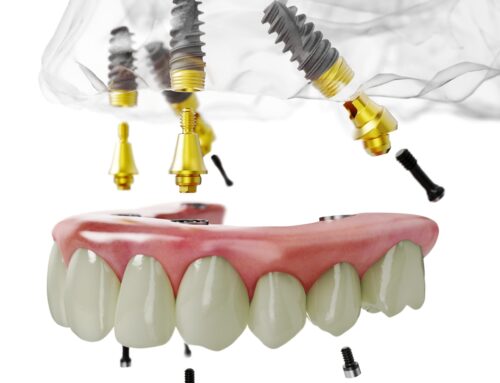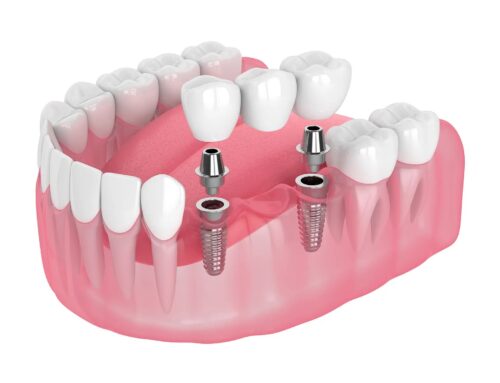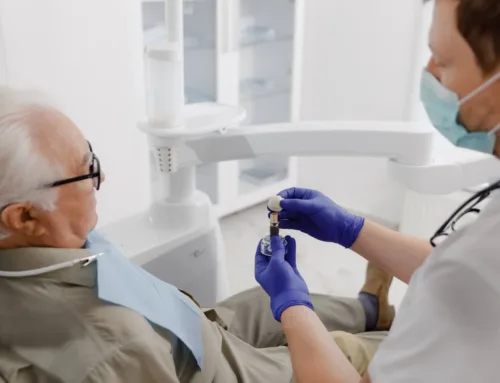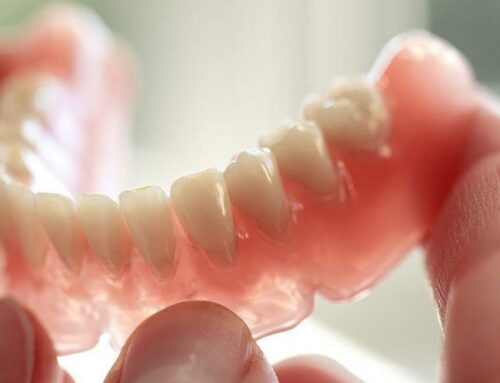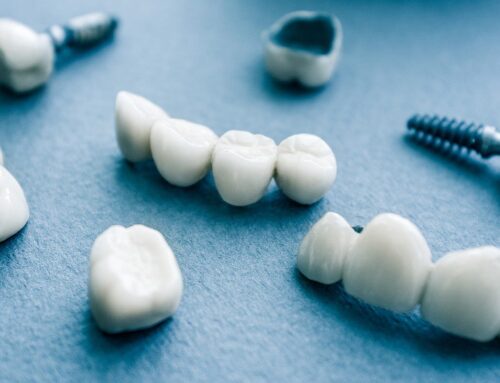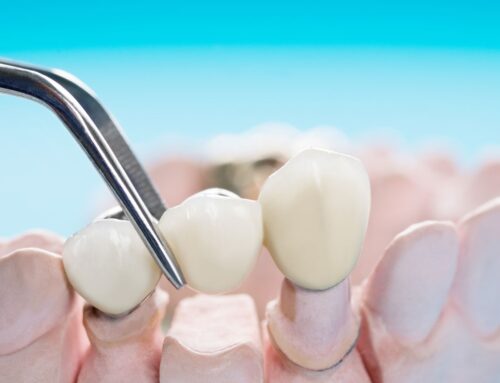Preserve Your Smile – With Permanent Teeth Dental Implants
In our continued efforts to provide our patients with the utmost of oral care, this Chapter of our Dental Dictionary explores the terminology associated with Dental Implants.
Sometimes, in spite of people’s best efforts, genetics or unusual life-circumstances intervene, and our clients find themselves in need of dental implants, not only to preserve their smiles but also to maintain good overall health. This may be due not only to Dental Caries but also to Avulsed Teeth. (definitions follow). Implants look and feel like natural teeth, and provide a much more comfortable and permanent alternative to partial or full dentures, and bridges. Implants can restore a patient’s chewing power along with the ability to savour a variety of foods they would avoid if using bridges or dentures, and thereby also restoring their own self confidence.
But before diving deeper into the intricacies of permanent dental implants, let’s understand how and where this all starts, since “Knowledge Is Power” – (Sir Francis Bacon, 1597) – and understanding your oral health is the foundation to good overall health.
Dental Caries
Tooth decay – aka dental caries or cavities – is the primary reason for dental implants is caused by the acids made by oral bacteria, which breaks the teeth down. There are different colours associated with having cavities, ranging from yellow in the earlier stages, and eventually turn to black as the decay progresses. Dental caries may be accompanied by pain and difficulty eating, along with inflammation of the tissue around the tooth and even the formation of an abscess. According to the Canadian Dental Association (CDA) during COVID-19, there is an increased need for infection control, some of which may start in the mouth as a result of dental caries.
Furthermore, the World Health Organization (WHO), as of 2016, there were approximately 3.6 billion people – that’s 48% of the world’s population – who have dental caries in their permanent teeth! They further estimate that nearly all adults have dental caries at some point in their lifetime. In the teeth of babies and younger children, about 620 million people or 9% of the population have cavities, mainly due to the increased consumption of simple, refined sugars in their diets!
In addition, the American Academy of Pediatric Dentistry states that “Dental caries is the most common chronic disease of childhood. Twenty-four percent of US children 2 to 4 years of age, 53% of children 6 to 8 years of age, and a whopping 56% of 15-year-olds have already experienced cavities.”
If you have any concerns about the state of your dental health or think you may be some prone to developing cavities, call our dental specialists to keep on top of your oral care routine.
Dental Implants
A dental implant is the next best thing to having your own permanent teeth. An implant is the placement of an artificial root into your jaw, to hold a replacement tooth – called the crown – in place. The implant mimics the shape of the root and is usually made of titanium and other materials that are well-suited to the human body, as you will see in the article below.
Implant Facts 101
The history of Dental Implants is a relatively recent on that began in 1952, when Swedish orthopedic dental surgeon Dr. Per-Ingvar Branemark invented them. His groundbreaking discovery found that it is possible for titanium to fuse with human bone… as it grows! Initially he implanted 1 individual tooth for each tooth lost, but in 1965 he performed the full-mouth dental implantation with multiple teeth attached to 1 implant. The benefit of this vs individual implants is that it distributes the pressure / force of the patient’s bite around whole mouth vs on individual teeth. This results in not only the implants lasting longer, but also requires fewer actual implants into the jawbone.
According to The Dental Tribune – The World’s Largest Dental Newspaper which reaches 650K+ dental professionals world-wide – to celebrate this revolutionary and most significant of dental discoveries, the first Global Osseointegration* Day was held on Branemark’s birthday this year on May 3, 2021. (*definitions follow)
Building on the dental implant foundation created by Dr. Branemark, in 1998 Dr. Paulo Maro invented the revolutionary All-on-4® implants, which have become one of the most significant advances in the specialty field of Implant Dentistry.
The Dental Implant Procedure
In preparation for the actual implant, digital scanning will be utilized to design and digitally simulate the dental implant surgery. Using 3D Cone Beam Computed Tomography – a facial scanning technology – your current smile will be captured and your new smile will be perfected with the aid of specialized software. Definitions for each of the medical terms will follow.
Providing there is enough healthy gum tissue and the patient has a sufficiently dense jaw bone, implants can be placed into the upper or lower jaw, at either the front or the back of your mouth. These will become the anchors onto which new man-made teeth or crowns will be permanently affixed.
The outline below will provide you with a top-line summary of the dental implant process, which after due consultation with our dental experts, can provide our patients with an entire new set of teeth, in just one day… with a special implant process called All-on-4®!
However, most implants involve two or three steps, with the placement being dependent on the patient and the type of teeth being replaced.
- Under sedation, any remaining decayed teeth may be extracted, and tiny incisions are made in the gums to expose the jawbone. Then the implant is then placed into the jaw and the gum is secured over the implant.
- These implants have a porous surface, which allows bone tissue to grow into them, further strengthening the bonds. With no rejection by the patient’s immune system, over the next three to six months the titanium implant will fuse with the jawbone via the process of Osseointegration. This period allows the bone to heal and attain structural and functional integrity, where in some cases a bone graft may be required. However, we may also be able to place the implant instantly in some patients who don’t have to wait for this process of Osseointegration.
- Once the implant and bone have bonded together, our Endodontist may attach an extension, called an abutment, to the implant. In some cases, the implant and abutment are a single unit placed during the initial surgery.
- A second surgery may be required for some patients, in order to attach the abutment to the replacement teeth.
- Once healed, the implant and abutment will become the foundation for the newly implanted tooth. In the final step, the dentist or specialist makes a crown in the right size, shape, and colour to match your natural teeth. The replacement tooth – called the crown – is then attached to the implant post.
- Regular follow ups will be scheduled to check the implant’s placement and the state of the patient’s gums, a process that is crucial for the success and ongoing health of the implanted teeth.
All on 4®
The term All-on-4® – also called All‐on‐Four or All‐in‐Four – refers to potentially ‘all’ adult teeth (to a maximum of 28) being supported on four dental implants, which is considered to be a total rehabilitation or full mouth restoration. The four implants support a fixed prosthesis with 10 to 14 teeth, and it is implanted immediately, typically within 24 hours of surgery. Our team of dental specialists would be pleased to provide more information.
Titanium Implants
The titanium alloy that is used in dental implants is very biocompatible, meaning that it will not be rejected by the human body. Furthermore, titanium is even capable of bonding and fusing with the surrounding bone tissue through a process called Osseointegration, as defined below. It is therefore able to provide the strongest base of support possible, for the artificial teeth that will go on top of it. Titanium is also lightweight, hypoallergenic and has superior corrosion resistance.
Osseointegration
Dr. Branemark – considered to be the creator and father of the dental implant procedure – defined Osseointegration as “the direct structural and functional connection between the living bone and surface of a load-bearing implant” (Branemark, 1983). The ability of a titanium implant to bond with the surrounding host bone in the jaw line, is a fundamental requirement for these permanent orthopedic implants. It determines their long-term clinical success which is dependent on the response of the patient’s immune system, which is ultimately responsible for rejecting foreign materials.
Dental Cone Beam Tomography – CBCT
3D Cone Beam Computed Tomography is an imaging technology that allows Endodontists and dentists to capture and evaluate not only the underlying bone structure, but also the nerve pathways and surrounding soft tissues as well. During a cone beam CT examination, the C-arm rotates around the patient’s head in a complete 360-degree rotation and captures multiple images from different angles: these images are then reconstructed to create a single 3-D image, via a single scan. The results are a more focused x-ray beam provides a better image quality and a more complete and precise information to plan the implant treatment.
Bone Grafts
Bone augmentation is a surgical procedure usually performed by dental surgeons or an endodontist, to repair damaged bones, by transplanting a synthetic or natural bone on the affected area. Dental bone this procedure rebuilds, strengthens and stabilize the jawbone and provides the necessary support for dental implant placements.
Prosthodontics
Prosthodontics is the specialized branch of dentistry which encompasses the design, manufacture and fitting of artificial permanent and semi-permanent replacements for teeth. The field of prosthodontics includes specialized procedures for the repair or replacement of teeth with prosthetics, such as dental crowns & bridges, dentures, and dental implants.
Avulsed Tooth
According to the American Association of Endodontists, over 5 million teeth are knocked out annually in children due to sports-related injuries or accidents. An avulsed tooth occurs when the tooth becomes completely dislodged from its socket, in a traumatic injury. If the re-insertion of the lost tooth is not possible, then the implantation of an artificial tooth is the next best viable option. A description of the implant process and special terms follows later in the article below.
Edentulous
A person who is totally toothless is called an edentulous patient, one who has lost their teeth due to cavities or due to compromised teeth, as a result of gum disease.
Prosthodontics
This is a surgical procedure or technique whereby the fixed prosthetics are placed on four implants – 2 in the upper palate and 2 in the back of the lower jaw. In medical terms this is called the anterior maxilla, where the bone density is higher.
Dental Prosthetics
These are the dental appliances – which include implants, crowns, bridges, dentures and veneers – that cover up the patient’s tooth defects and replace their missing teeth. While the dentures can be removable, the others are permanently fixed in your mouth.
Endodontist
Proudly calling themselves the “Specialists in Saving Teeth”, Endodontists have completed an additional two or more years of training beyond dental school. Their enhanced education focuses on procedures pertaining to the interior of the tooth. This includes identifying the causes of tooth pain and the ability to perform root canal treatments, which results in the saving of a diseased tooth, through their endodontic treatments.
You can rely on Georgian Dental’s state-of-the-art dental implant procedures to not only restore your smile, but also your ability speak clearly, to chew properly and to eat some of those “forbidden foods” that your dentures were unable to manage previously.
Contact our skilled team of professionals at Georgian Dental for your personal consultation, to determine the best dental implant treatment options for you to restore your smile… and your confidence.
Appointment Request
If you’re interested in any of our procedures, and would like to meet with one of our dentists to discuss options, costs and get additional information, complete this short form and we’ll give you a call to arrange for a no-obligation appointment at our Barrie clinic.
